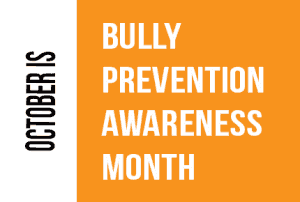AN INTRODUCTION TO BULLYING
By Staff
When discussing bullying, several terms are frequently used:
- Bully: Refers to the person perpetuating the bullying actions, such as taunting, pushing, or engaging in online harassment.
- Victim: Describes the individual on the receiving end of bullying, often referred to as the target.
- Bystander: Refers to someone who witnesses a bullying event. Bystanders can be either active or passive in their response.
- Active bystanders intervene and take action to help the victim or address the bullying behavior.
- Passive bystanders choose to watch or walk away without intervening, which can inadvertently be seen as supporting the bully.
- Bystander Effect: This social phenomenon occurs when bystanders defer responsibility to act, assuming that someone else will take action, resulting in a lack of collective intervention.
Bullying can manifest in different forms:
- Physical Bullying: Involves direct physical actions like hitting, pushing, kicking, or damaging property.
- Verbal Bullying: Includes name-calling, teasing, spreading rumors, or using words to harm someone emotionally.
- Emotional Bullying: Focuses on making someone feel bad about themselves, manipulation, isolation, or encouraging others to exclude a certain individual.
- Cyberbullying: Refers to bullying that occurs online through platforms such as chat rooms, private messages, social media, or email. The nature of online communication can make it challenging to identify and prevent cyberbullying.
Differentiating between teasing and bullying can be difficult. However, certain factors can help determine if the behavior qualifies as bullying:
- Imbalance of power: There is a perceived or real power imbalance where one person exerts control over another. This power can be physical, social, or related to popularity.
- Intention and recurrence: Bullying involves intentional and repetitive behavior aimed at causing harm. The bully may show no remorse, refuse to take responsibility, and may threaten or repeat their actions to achieve the desired reaction.
If a child is involved in bullying (as either the bully or the victim), the appropriate response depends on the individual child’s disposition, life experiences, and coping skills. It is essential to remember that bullying is a behavior that can be changed, and children can learn to stand up for themselves and others.
To reduce and eliminate bullying behaviors, several steps can be taken:
- Model positive behavior: Set a good example for your child by demonstrating appropriate ways to handle emotions and conflicts without resorting to hurtful actions.
- Role play scenarios: Help your child develop empathy by encouraging them to imagine themselves in the shoes of the victim or a bystander. Discuss different perspectives, emotions, and the potential impact of their actions.
- Promote being an active bystander: Teach children the importance of being a good friend and intervening when they witness bullying. Encourage them to accept others, be helpful, and, above all, be kind.
- Teach assertiveness: Empower children to stand up for themselves and others when faced with inappropriate or harmful situations. Foster their confidence to address problems in a respectful manner.
- Differentiate between telling and tattling: Help children understand the difference between responsible reporting of situations that are out of their control (to protect others) and tattling, which aims to get someone in trouble without just cause.
- Utilize school counselors: Encourage children to seek support from school counselors who can provide resources and guidance in addressing bullying situations.
- Reinforce positive growth: Acknowledge and praise children for making positive choices and efforts to change their behavior. Let them know you appreciate their progress and value their commitment to personal growth.
- Open communication: Foster a trusting environment where your child feels comfortable discussing both positive and negative experiences. Validate their feelings and provide support and guidance.
Parents can access additional resources to gain further knowledge and support:
- PACER (founder of National Bullying Prevention Month): Provides a wide range of resources about bullying for children of all ages. (http://www.pacer.org/bullying/)
- U.S. Department of Health and Human Services: Offers valuable information and resources on bullying. (http://www.stopbullying.gov/what-is-bullying/index.html)
- The It Gets Better Project: Provides information and support for students who identify as LGBT and their families. (http://www.itgetsbetter.org)
Remember, open and honest conversations with children about bullying help build trust, facilitate decision-making skills, and create a safe space for them to express their feelings and concerns.

